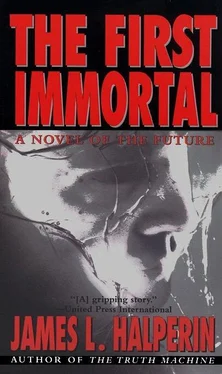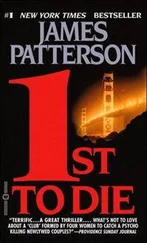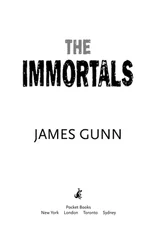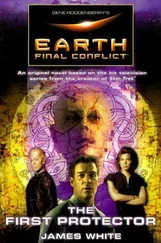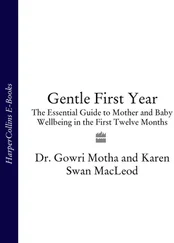“(2) Universal free trade.
“(3) The legal right of every human being to full protection under the law, with all laws uniformly enforceable upon all individuals throughout all regions.
“(4) The constitutional responsibility of every…”
Glancing at my photon-microscope screen, I noticed in the sample a dendritic texture I’d never been able to link. Maybe something to do with muscle constriction?
That was when I stopped hearing Malinkov’s words or noticing his face in front of me. I became too engrossed in the work, my only reliable escape from grief that could otherwise still overwhelm.
Human gray matter had become, to me, the most fascinating substance in the universe, a marvel of complexity. I tried to fathom the sheer magnitude: Each brain actually contained about six-hundred quintillion of molecular machines, an amount ten times greater than the number of connections required to link all eight billion people on Earth to every other person! No wonder humans had always refused to think of themselves as mere machines. The brain was far too complex to fathom in those terms. It would be like describing the Sistine Chapel as an amalgam of wood and paint.
The study of the brain was nanotech’s critical frontier. Scientists had long ago discredited the tenets of vitalism: that humans possessed souls apart from physical matter. The brain’s enormous complexity was now deemed finite, and therefore ultimately fathomable.
Near-death experiences, for example, had been synthesized decades earlier by carefully depriving volunteers’ brains and eyes of blood flow. These had been categorized into seventeen distinct types. Now AI machines could actually predict which type of “NDE” any individual’s rods and cones would project into their ebbing consciousness.
There was no apparent reason why evolution would have induced dying human brains to dream of the tunnel and the white light. Yet so many of them did. Perhaps, I thought, NDEs were simply one of humanity’s many gifts from God.
The newest science continued to suggest that personality, identity, and all long-term memory were recorded through the continuous reorganization of protein molecules in the brain’s neurons. Perhaps some short-term memory was energy-related, or recorded at the subatomic level, but that hypothesis seemed unlikely. Probably, every facet of human thought boiled down to the quintillions of protein molecules, or at worst, the atoms composing them. Hopeful tidings indeed for anyone who happened to lie frozen in soft-nite.
August 14, 2051
—Lunar Power Systems announces plans to build 41,600 additional collectors on the moon’s surface. LPS already supplies 29% of the earth’s energy needs, and the new construction will double its capacity. CEO Rob Campbell explains, “The moon’s an ideal environment for collecting solar energy, since it has no atmosphere and the iron and silicon needed for solar power collectors are abundant.” Once collected, the energy is converted to microwaves and transmitted to receivers on Earth.—Reacting to public uproar over six irreversible deaths caused so far this year by intoxicated or sleep-deprived pilots, Raytheon announces it will add competence sensors to all its gyrocopters within 24 months. The new devices will prevent the machines from starting unless the operator is sober, drug-free, and alert.
Now forty-five years of age, I’d never felt pressure to marry. Of course I knew the AI shrinks would blame such inconstancy on childhood loss of both parents and the inevitable fear-of-attachment such tragedies produce. My few relationships with women had been pleasant, tender, and brief.
But Wendy was a different story.
For sixteen years I’d brought Wendy-girl everywhere with me: to the lab, to meetings, to conferences around the world. Giants of international science were no doubt bemused by the spectacle of this well-known nanoscientist, on hands and knees on the conference floor, coaxing my golden retriever to walk on hind legs, or to lift her snout and sing along with me.
That is, until the day, three months ago, when the decay of her advanced age had forced me to place her in biostasis.
Coincidentally, Wendy’s suspension took place the day after the Armstrong Aging Models had been released. The foremost software genius of the twenty-first century had spent the previous two decades working with an array of state-of-the-art AI machines to produce the most intricate programming in history, allowing biologists and other researchers to perform quantifiable cyberspace experiments on human aging.
Of course, Randall Petersen Armstrong’s work was readily applicable to canines, a nuance not lost on me.
Even before Wendy’s suspension, I’d begun studying the phenomenon of aging with an obsession matching my previous delvings into nanotech and neuroscience. My own appointment with death-or-ice seemed too distant to warrant preparation—my present prebiostasis life expectancy was at least 110—but the impending demise of my first golden retriever had filled me with an overwhelming sense of urgency.
Over the previous half century, even as medical knowledge expanded exponentially, the fundamental theories of aging had changed little. Most specialists still believed that aging arose from a combination of three factors:
(1) Ionization damage to molecules and DNA caused mainly by natural oxidation, primarily free radicals. Most of this damage was redressed by the body’s natural systems, but over time the cumulative damage to DNA diminished this ability to self-repair, and eventually overwhelmed it.
(2) Hormonal decline, and degradation of body tissue through processes such as glycation, when proteins and surplus sugars combine to form a crust that can block arteries, stiffen joints, and pollute organs and other vital structures.
(3) A natural aging “clock” built into all mammals. After a certain number of cell divisions, telomeres would shorten, rendering cells incapable of further reproduction. Many decades earlier, scientists had hoped that this seemingly simple phenomenon was the root cause of cellular death. But, unfortunately, it was merely one symptom of what turned out to be an astonishingly complex problem.
I considered myself qualified to work on anti-aging research, since nanotech seemed the most promising vehicle for overcoming all three of aging’s presumed causes. The body was, after all, a machine, not unlike a very complicated computer.
To repair a damaged computer, a technician needed only to identify the defective parts, remove them, rebuild or replace them, then put them back where they belong. No other scientific discipline seemed equal to the task. Imagine trying to accomplish computer repair using chemicals (medicines), or tools a billion times larger than the parts being replaced (microsurgery). Yet pharmacology and microsurgery remained the only tools available to fix a damaged “human machine.”
I reasoned that eventually nanotech, in tandem with ever-advancing AI systems, would change that. And somehow, I would be part of it. In fact, the day the Truth Machine trillionaire had released the Armstrong Aging Models, I obtained a copy of the software and set to work.
Three days after Wendy’s suspension, I purchased another golden retriever puppy. Sure that someday Wendy-girl would emerge from the ice, I wondered whether my affection for this new pet would ever match the love I’d felt for my first. Upon Wendy’s reanimation, how would I divide my love between the two? Would they love one another as sisters, or would there be tantrums of jealousy?
After careful consideration, I decided to name my new, second puppy— what else? —Wendy.
June 3, 2064
—Avon Cleaner’s landmark location on Lover’s Lane in Dallas Texas reopens as a 20th century clothing museum. The dry-cleaning establishment closed its doors nearly two decades ago, a casualty of the pervasiveness of self-cleaning apparel.—After 16 months of difficulties and delays, the supersonic elevator to WASA’s orbiting Copernicus-6 space observatory is finally declared operational. Because the fusion-powered hoverstation remains in perfect sync with the Earth’s rotation, WASH AIs deemed Copernicus 6 the ideal first recipient of this ground-breaking technology. The 96-mile edifice, composed almost entirely of carbon-based nanotubes, twelve times stronger and eight times lighter than steel, is by far the tallest structure in the world.
Читать дальше
